During the last few months, the Lifeology team has been busy working with health professionals, from mindfulness coaches to fitness coaches to medical specialists. We have been creating a series of Lifeology courses for LIFE Ascent, a 52-week program that gives subscribers the tools needed to improve their health. It is a program based on learning, measuring and establishing habits across multiple areas of health.
Subscribers establish habits that result in a greater understanding of how their body functions and why it responds the way it does to provide a foundation of sustainable weight management, improved fitness, and more. Lifeology courses are part of this program. We have tapped into our community of writers, reviewers, and illustrators to help develop these courses.
Creating Lifeology courses is a collaborative process between the writer, the artist, and the Lifeology team. Below is a diagram giving an overview of that process:
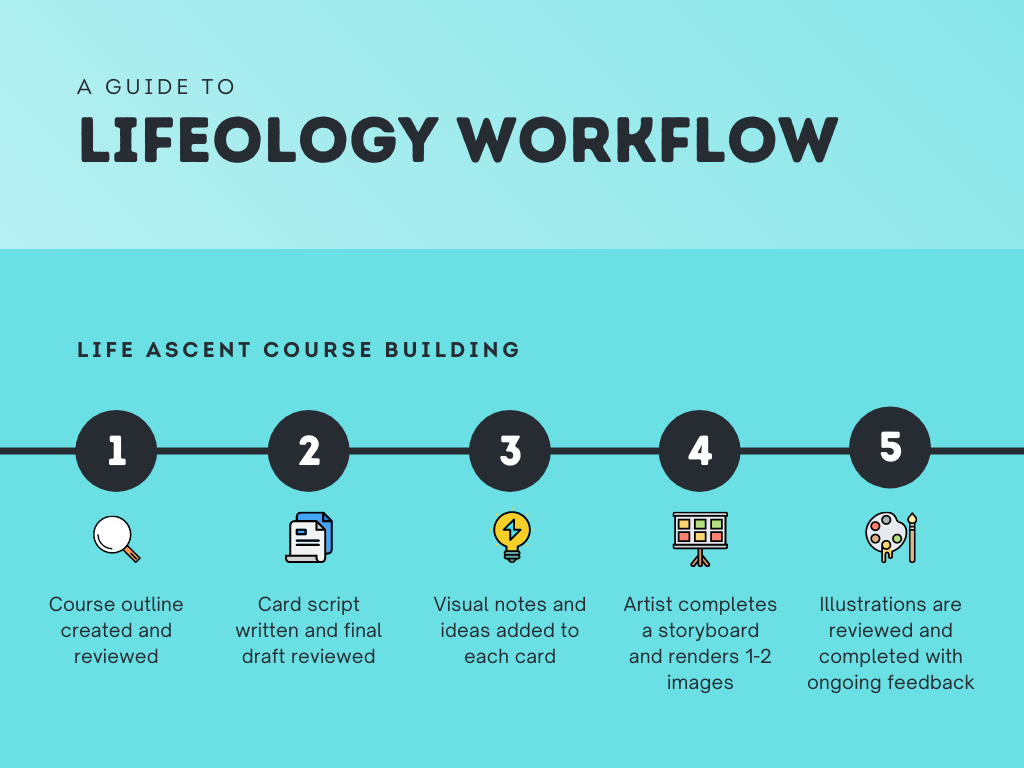
In this blog, we interviewed Lifeology community member Pooja Gupta, who recently illustrated a Nature Therapy course written by Amy Lajiness, LCSW, PMH-C.
Pooja is a multimedia science communicator with a specialist interest in ecology and wildlife conservation. With skills in design thinking combined with a hands-on approach to environmental communications, Pooja engages in visual storytelling to create a positive impact.
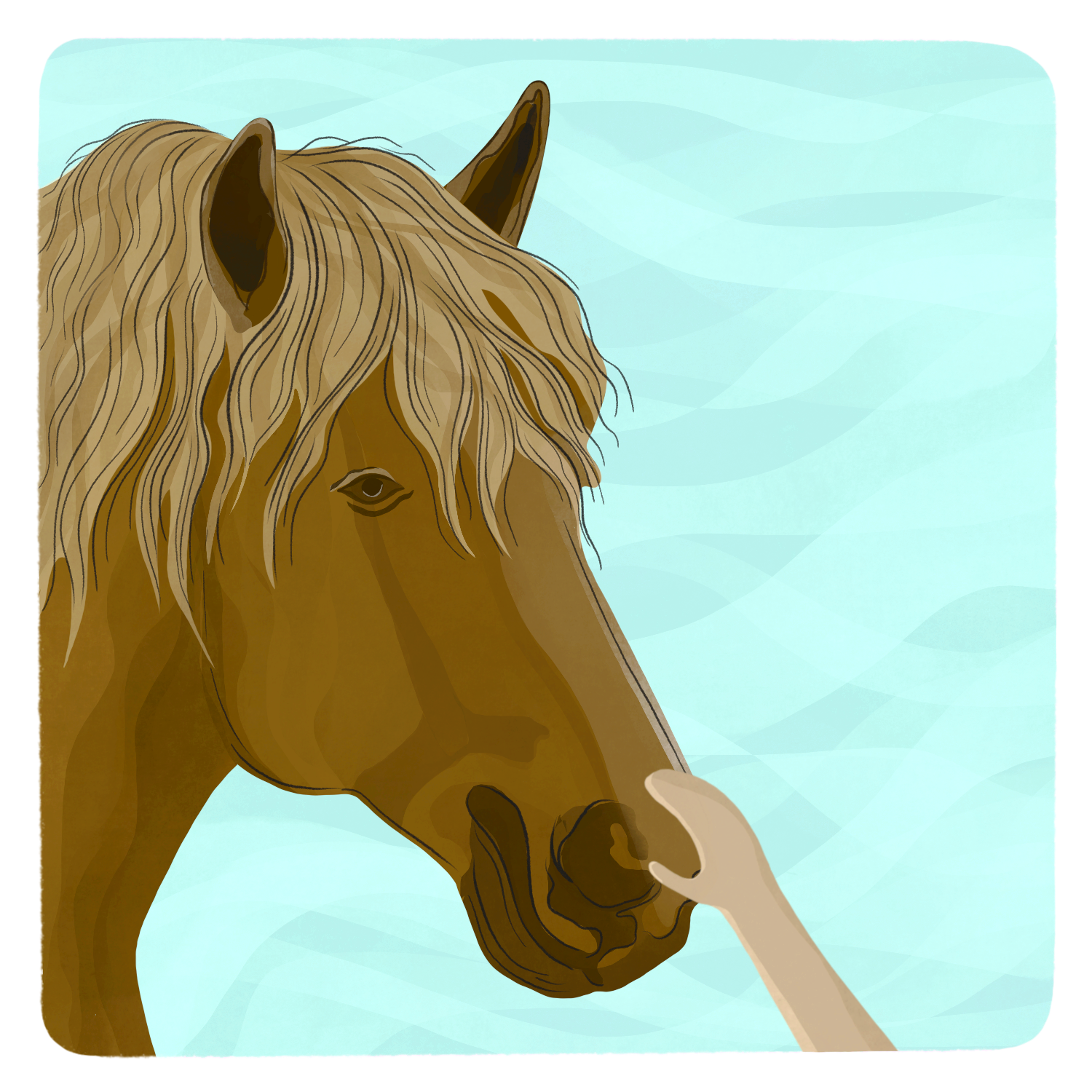
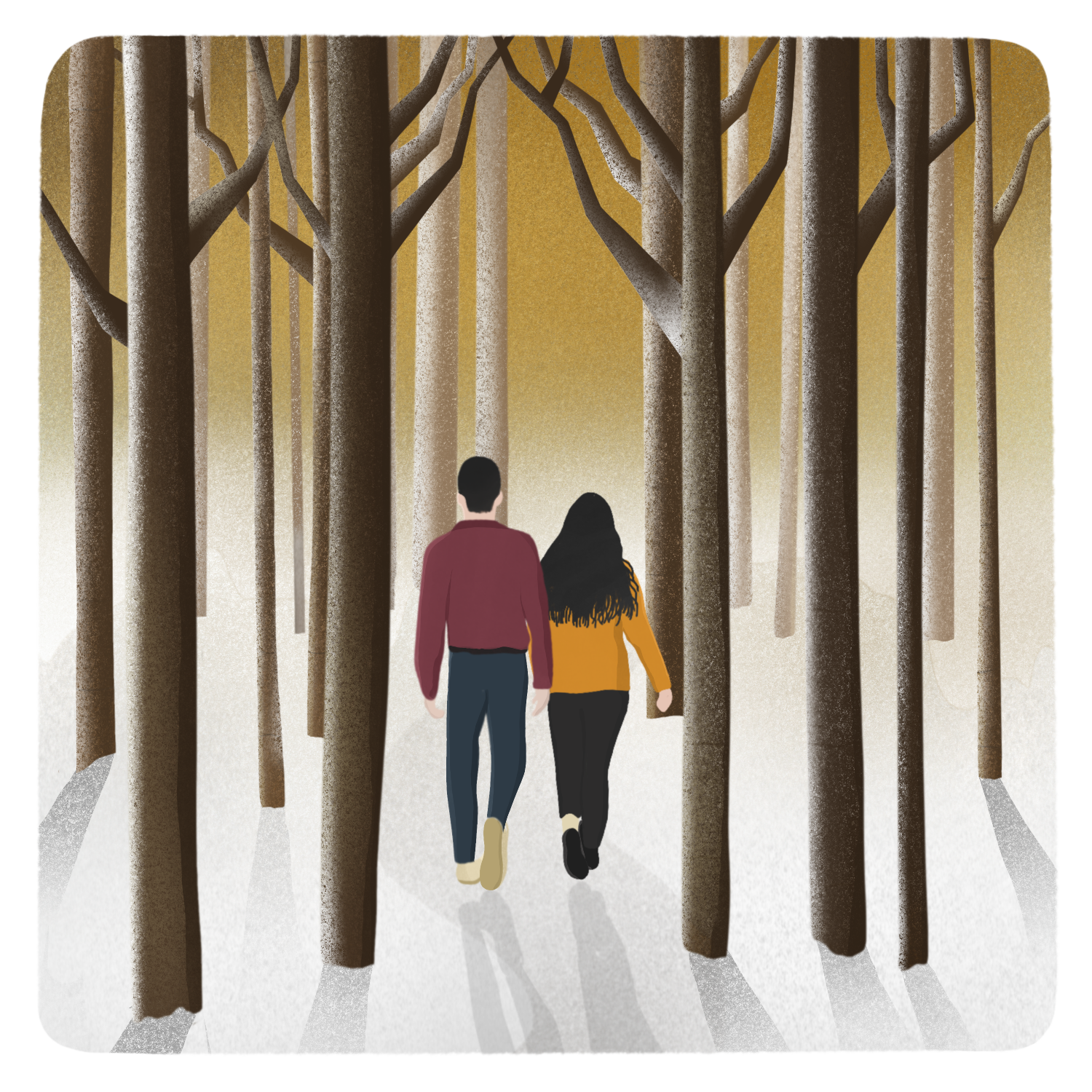
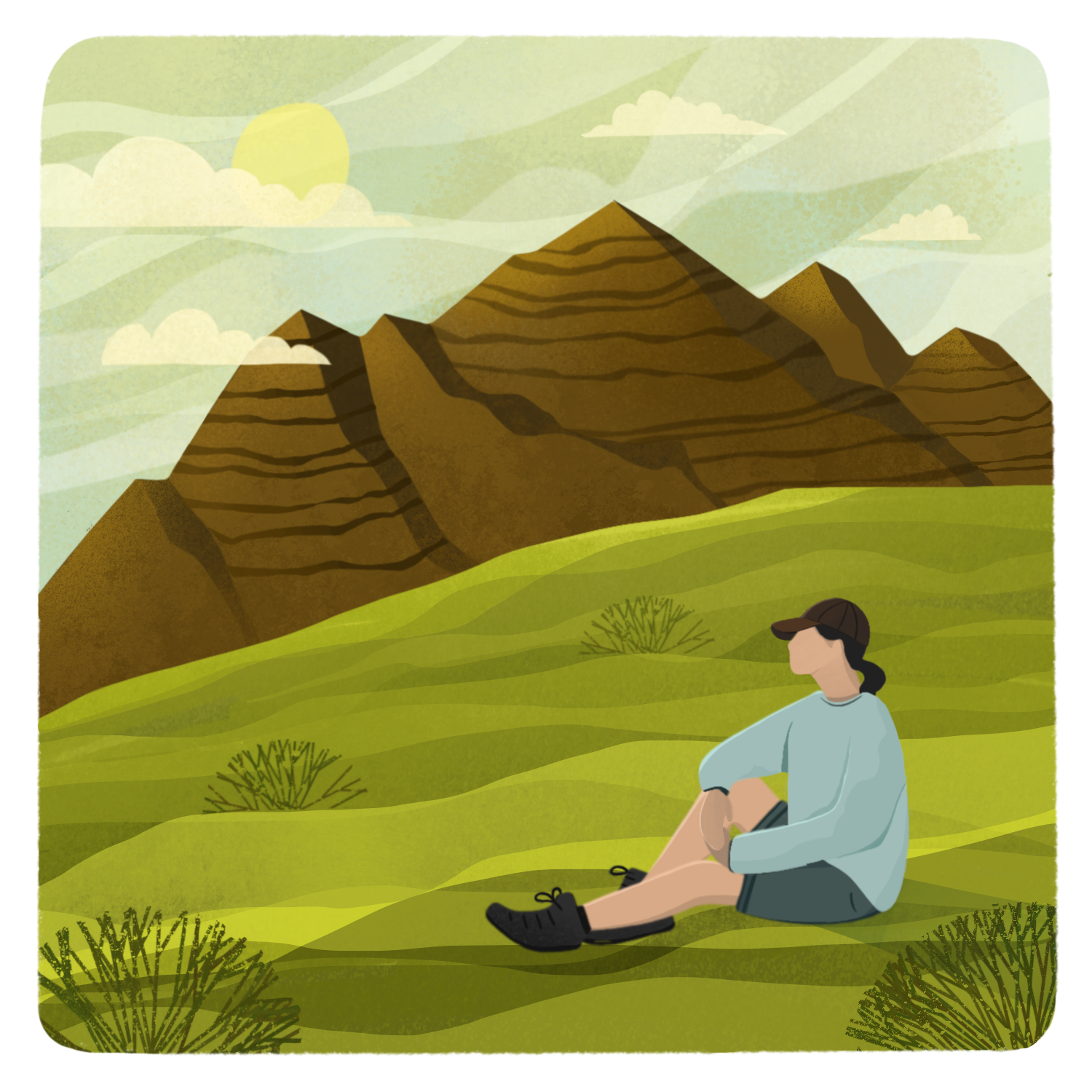
Illustrations from the LIFE Ascent nature therapy course – Artist: Pooja Gupta
Hi Pooja! Have you illustrated a Lifeology card deck before?
Yes, I’ve done illustrations for one other Lifeology course so far. It explored the complex relationship between food and dose and why it is important to follow instructions that come with medicines.
Lifeology: When looking at the script for the Nature Therapy Mindfulness course what were your initial impressions?
Pooja: If I may digress from the creation aspect itself, I couldn’t help but think WOW! I need to get outside right now. When I first read the script I’d already been city-bound and in lockdown for over six months. I knew then that I had to channel my want and need for being amidst nature into my illustrations.
I was picturing various scenes as I was reading through the script and thinking about relaxed times.
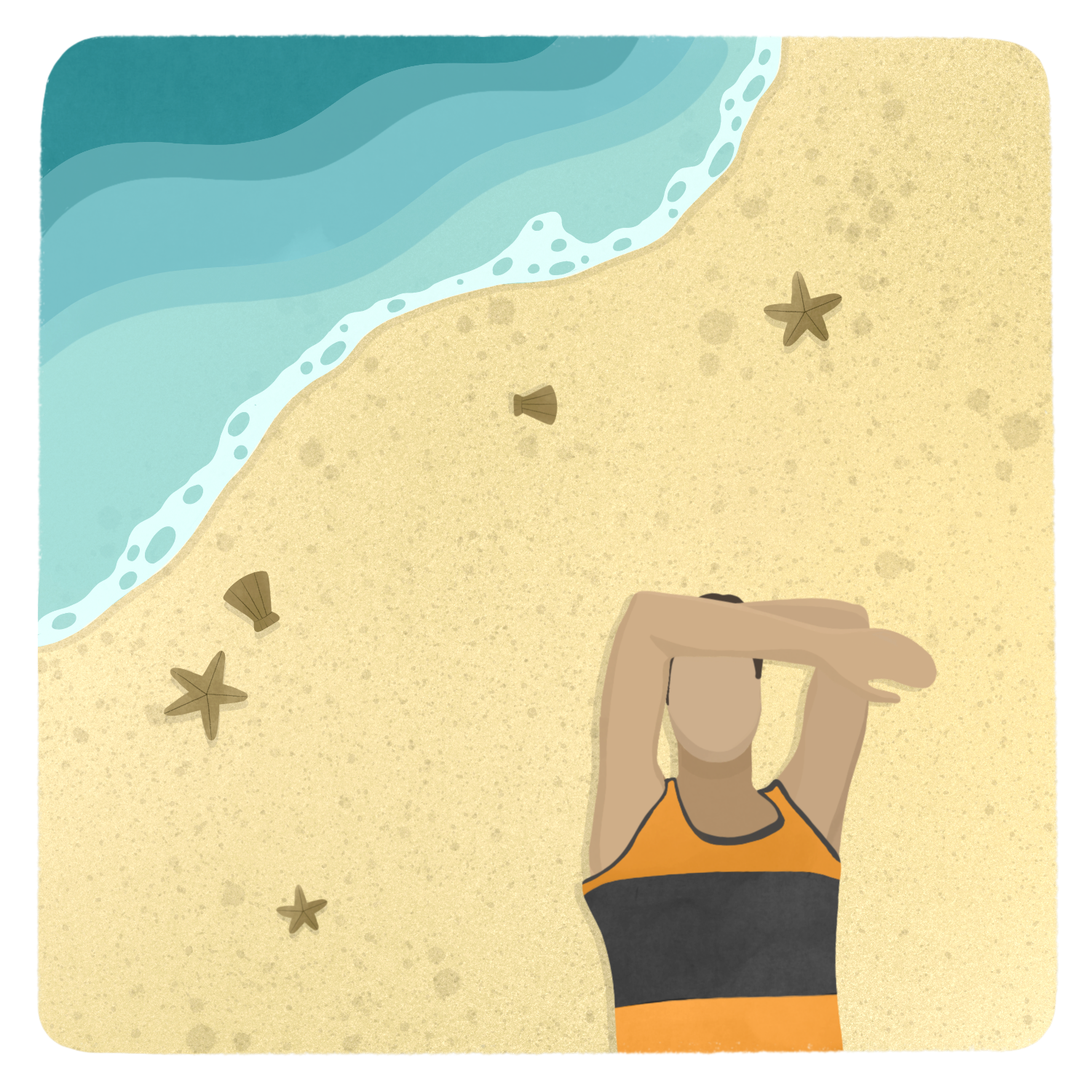
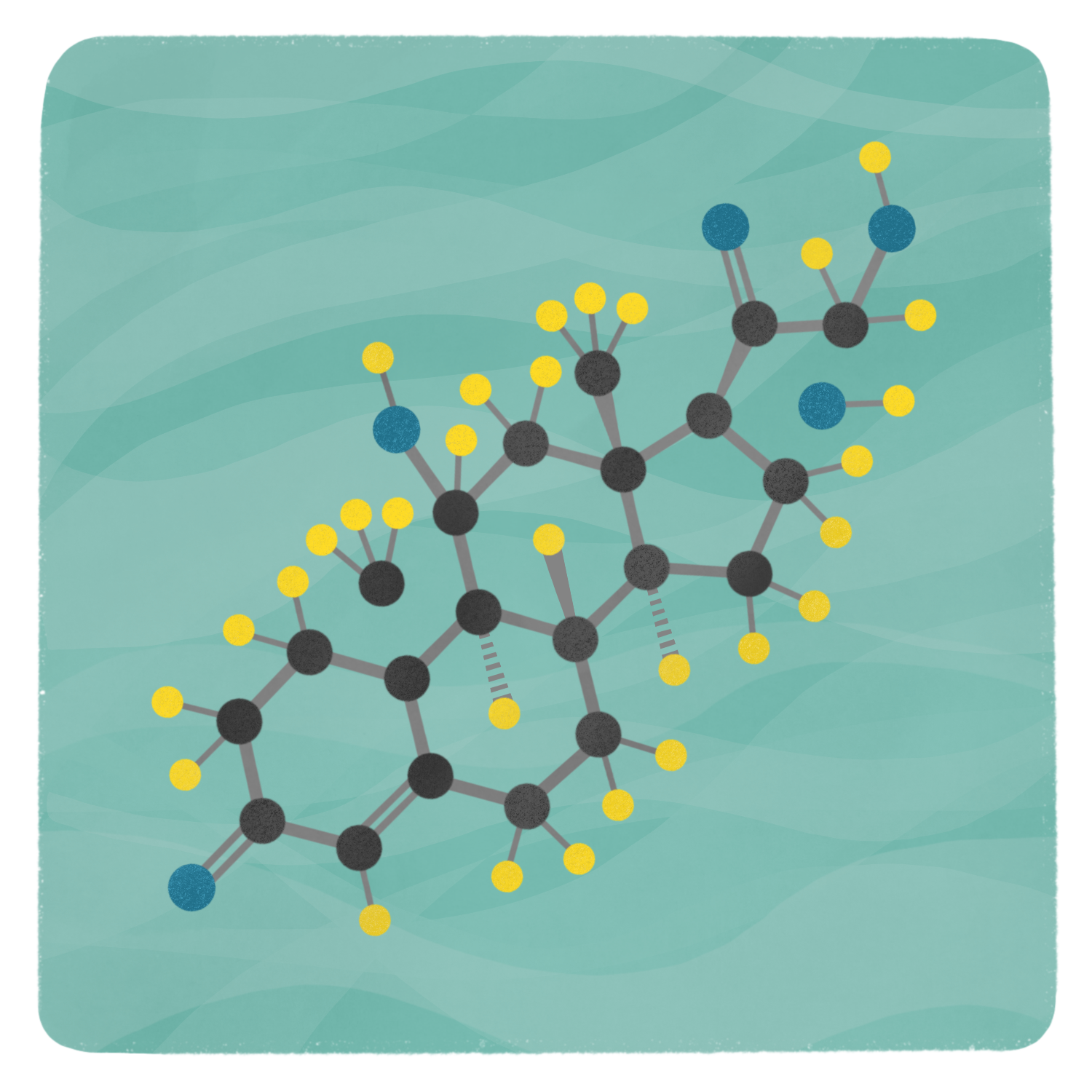
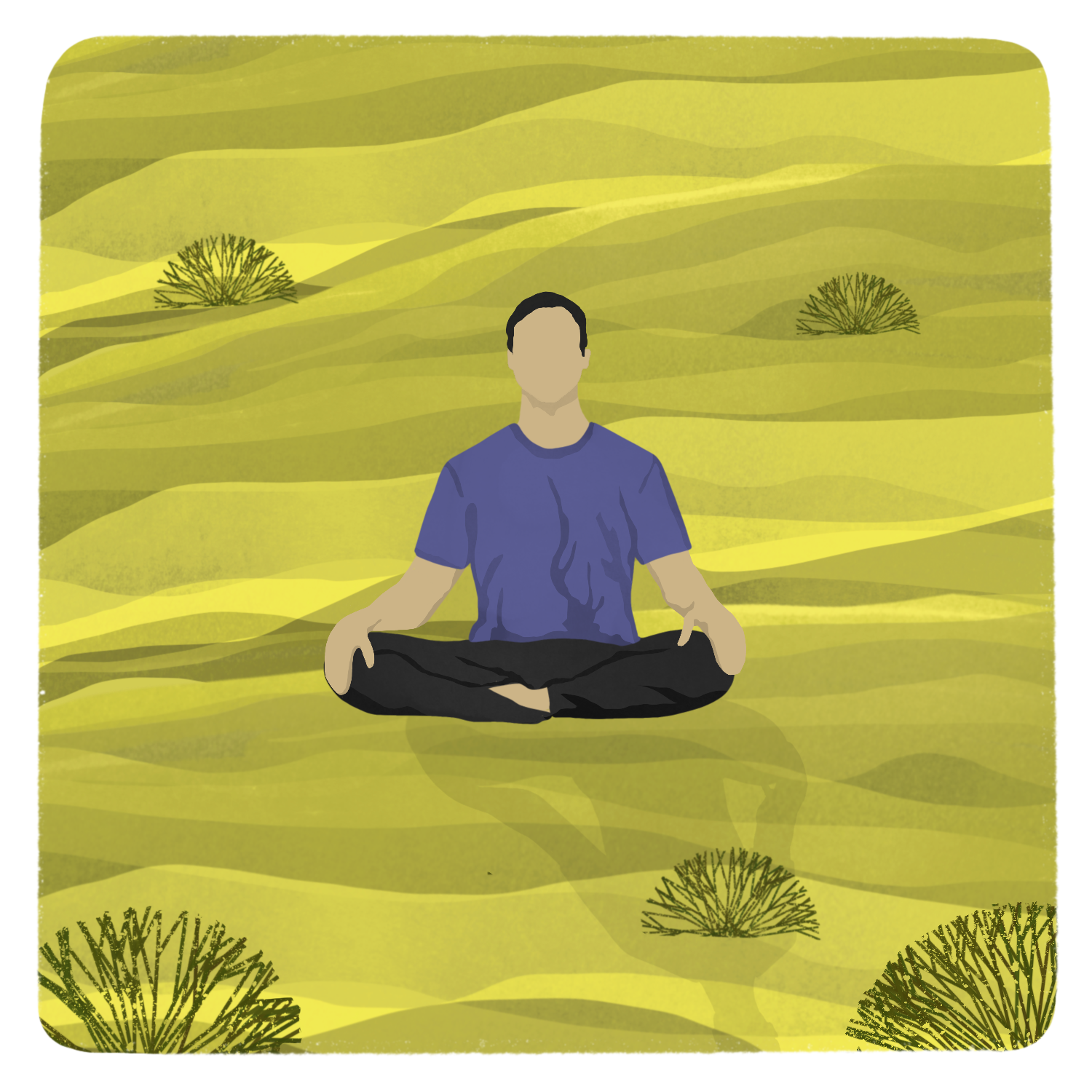
Lifeology: Were the visual notes useful as a starting point? Did you make any decisions to develop ideas further?
Pooja: The visual notes are a great starting point. I usually read the script without focusing on the visual notes and let my mind wander without limits or influence of any kind. I then look through the visual notes and do the comparison in my head. Sometimes I keep the same ideas and sometimes I tweak them or develop them further as it might be required.
Off the top of my head, the first card I remember where I pushed further in case of this script is the one about taking a dog for a walk. I’ve never owned a dog personally, and I always relate this to petting other dogs. Therefore I brought in a second person interaction hinting at the idea of a community.
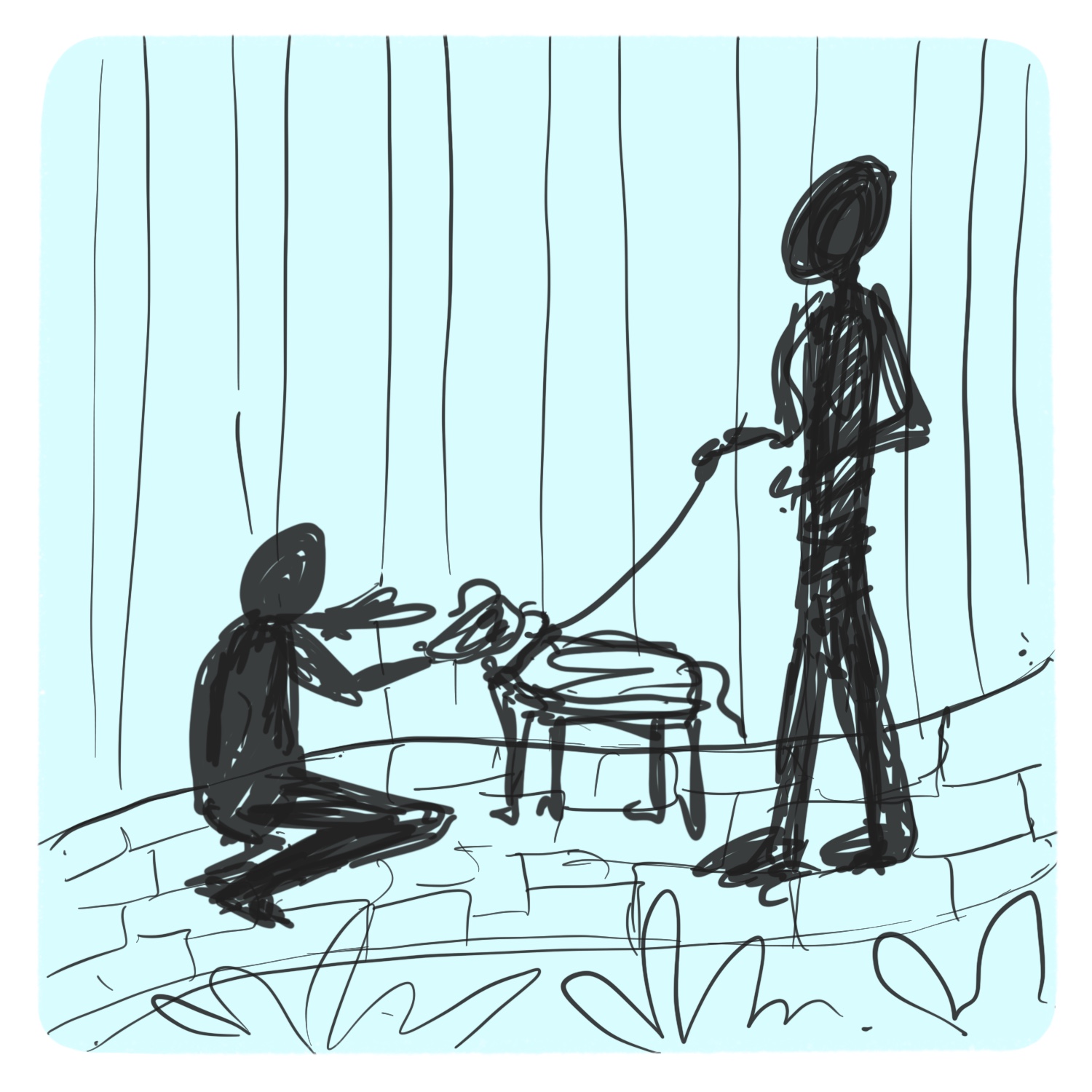
Storyboard Idea
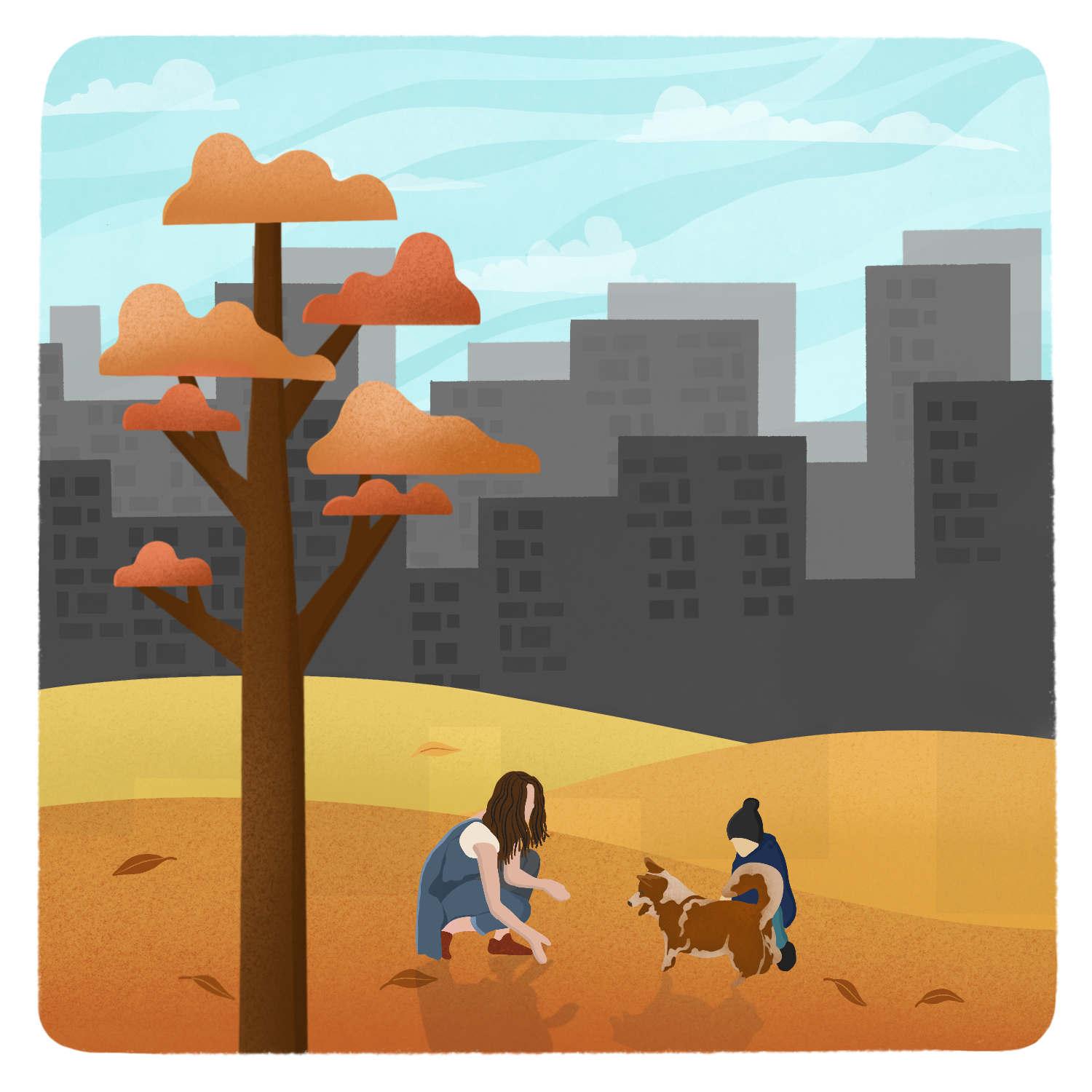
Fully rendered illustration
Lifeology: How useful is storyboarding? And how integral is it to the card deck?
Pooja: Storyboarding is useful in so many ways. Often, the ideas in my mind are more complex than what I’m able to create. The only way to test real potential and possibilities with each idea is by doing, in this case making the actual sketches.
Storyboarding helps me understand what works and doesn’t. It helps me explore compositions, angles, frames and so on.
More importantly, storyboarding helps me communicate my ideas to the writer or scientist who wrote the course. My sketches can be really rough or really detailed, depending on what I’m trying to say. Sometimes, if I’m unable to fully get a sense of the idea in rough sketches, I give them more time. Overall, it saves a lot of time and helps generate more ideas and refines my thought process.
Lifeology: Let’s talk about how you get started with storyboarding – do you roughly sketch ideas and then find reference images to help you refine or vice versa?
Pooja: For storyboarding, I start to scribble away straight away. Wherever ever need arises, I open up several reference images. I don’t have a set process on how I go about this, it’s a nice mix of events that occur until I get to where I’d like for it to be. For more simpler sketches I doodle out the idea and look for references much later.

Storyboard by Pooja Gupta
Lifeology: How do you decide on a color palette? Do you use any tools to help you?
Pooja: The way I decide colour depends on the mood and vibe we’d like for the course. This is usually mentioned in the brief. From that point, I either look up images to generate my own palettes or sometimes use platforms like adobe color to play with and find the right swatches.
Lifeology: What is/are your illustration tool(s) of choice and why?
Pooja: This is a tough one. I really like all the tools in my bag. I use illustrator, photoshop, and procreate. It depends on the style of illustration and the nature of the project. I think each has its own pros and cons. Lately, I’ve been using the procreate app on my iPad a whole lot more. I find that it is simple, easy to use, and a portable system which is great to get work done if and when on the move, even locally. Procreate does save me a lot of time because of its simple interface. It is great for smaller/simpler projects in general.
Lifeology: Let’s talk about fully rendering an image. Can you pick one image from the deck and walk us through that process?
Pooja: My rendering process is pretty straightforward. I tend to use my sketch layer as a base. I then fill out shapes with solid colours, block my colours, add texture, and then bring the idea of light into the artwork and finally the details. Sometimes, I repeat this same process multiple times for different sections within an image. See an example of my process in the video below:
Lifeology: How long does the final illustration process take?
Pooja: I find myself taking anywhere between 1.5 – 4 hours for each card.
Lifeology: Any advice to future Lifeology card artists?
Pooja: I don’t have specific advice but, I’ll use this chance to say – please don’t hesitate to reach out and ask any questions that you might have. I’d be most happy to share my learnings and advice on specifics. Whether it’s about a concept or a software or anything else in between.
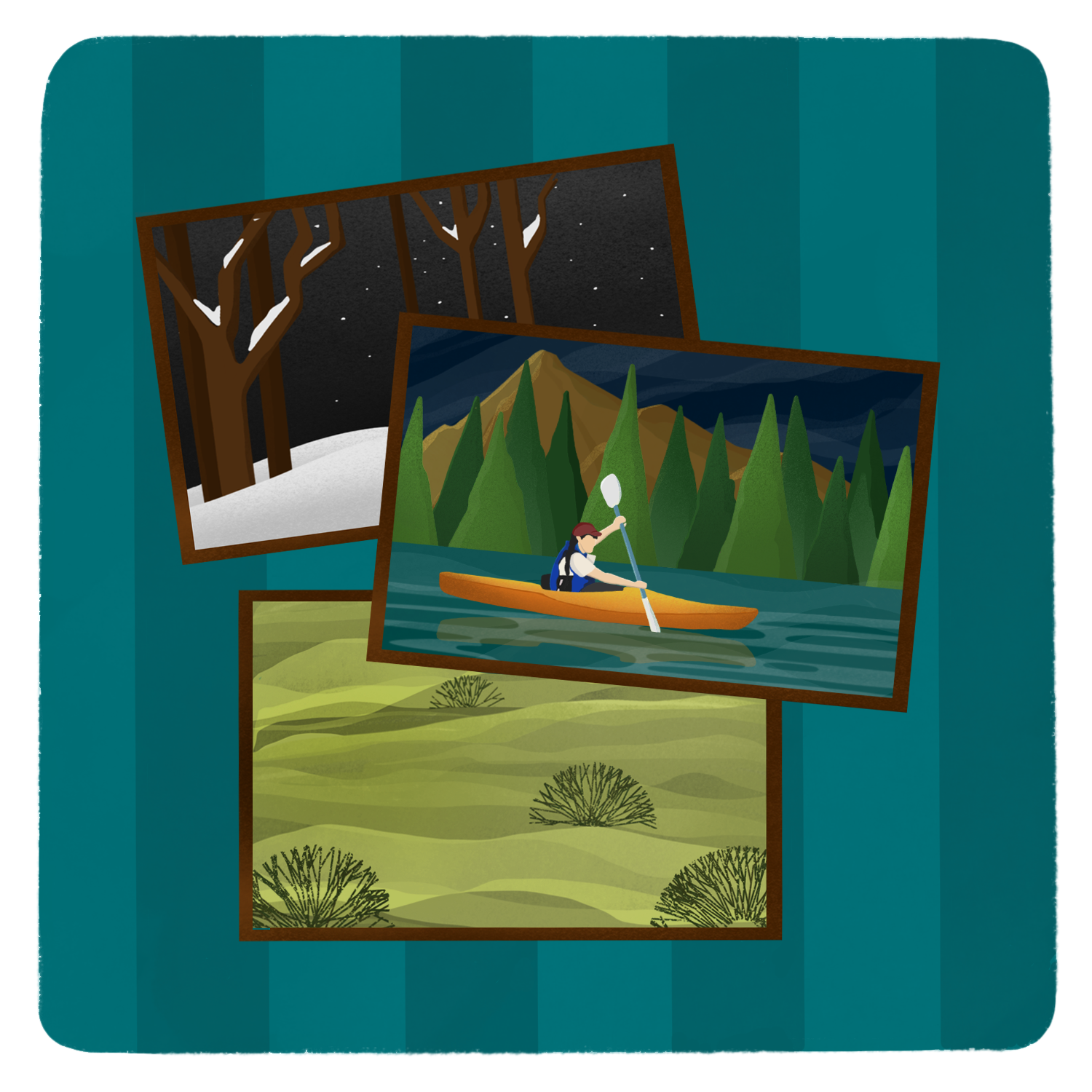
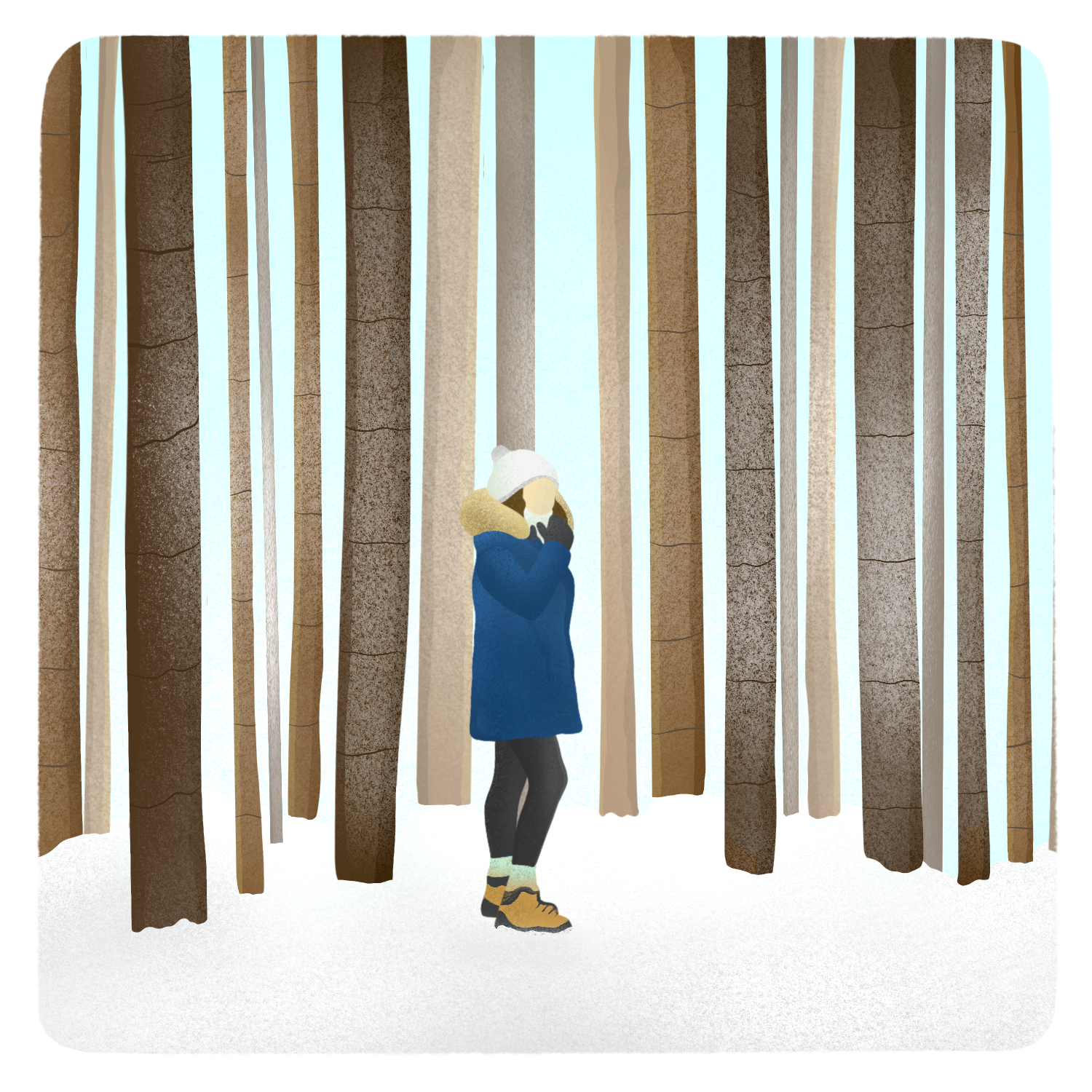
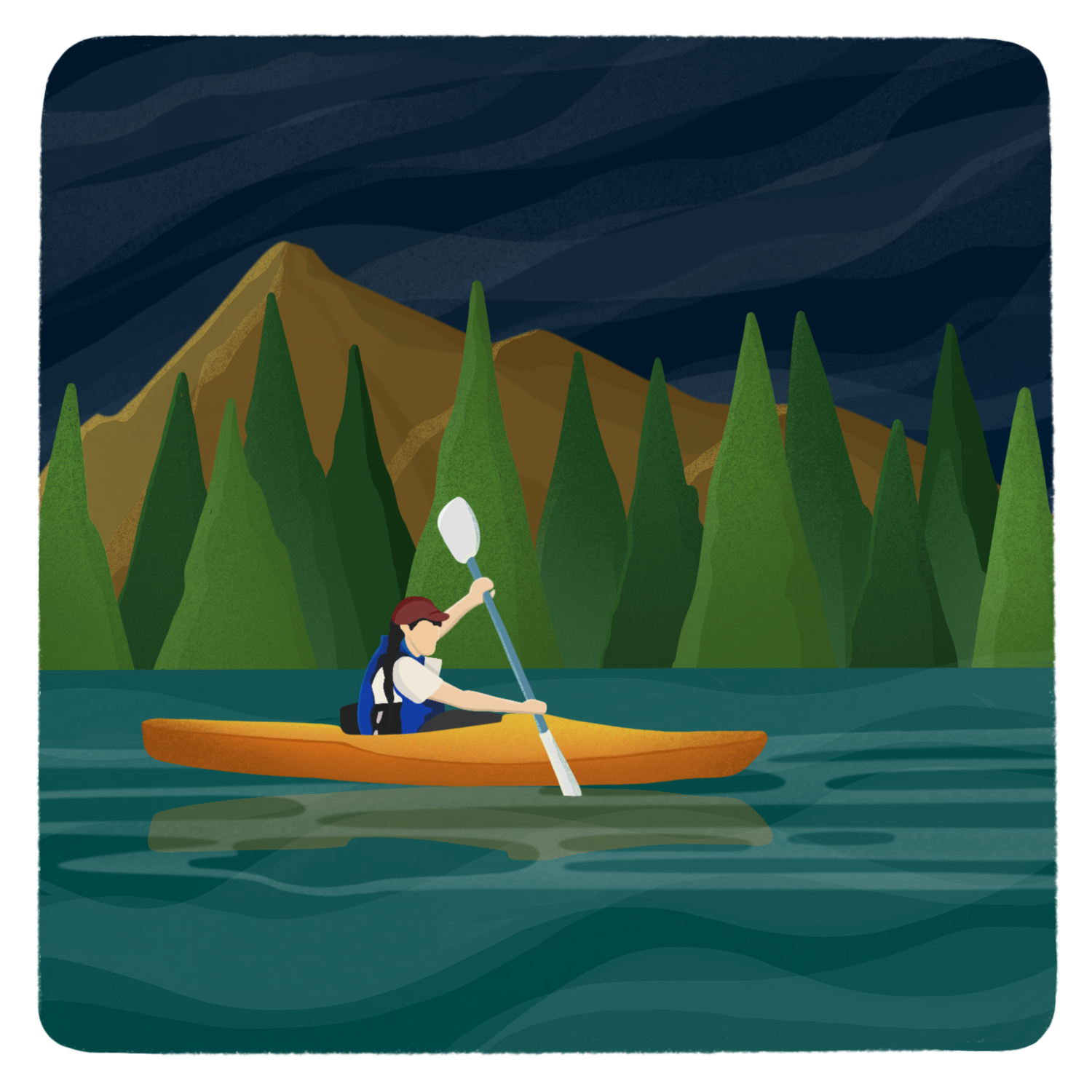
Learn more about the LIFE Ascent program here





